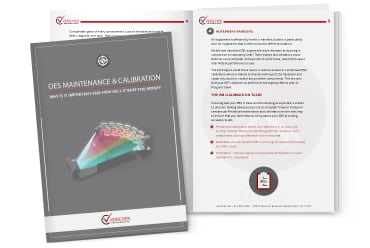
4100 series steel, commonly known as chromoly steel, is a chromium and molybdenum alloy used in a variety of applications such as aircraft tubing, gears, piston wrist pins, crankshafts, structural tubing, and firearms components. Due to the widespread use of 4100 series steels, mix-ups of metal grades frequently occur, necessitating metal sorting. This article discusses the properties, differences, and sorting methods for 4140 vs 4150 steel.
Overview of 4140 and 4150 Steel
More Information about 4140 Steel
4140 steel is a versatile alloy with a high tensile strength and toughness. It is known for its excellent fatigue and impact resistance. Commonly used in the manufacturing of gears, crankshafts, and heavy-duty machinery parts, 4140 steel is also favored for its wear resistance and ability to withstand high-stress environments.
More Information about 4150 Steel
4150 steel, on the other hand, is noted for its higher carbon content, making it harder and more heat-resistant than 4140 steel. This makes it ideal for applications where higher strength and durability are required, such as in the production of firearms barrels, high-strength bolts, and structural parts that must endure extreme conditions.
Chemical Composition and Properties
Verichek Technical Services, Inc. routinely conducts Positive Metal Identification (PMI) on 4100 series steel for grade differentiation. Customers who need the PMI analysis often own a handheld XRF unit but handheld XRF can only differentiate 4130 based on an accurate Manganese analysis. What if 4140 and 4150 are mixed up? If that’s the case organizations need a mobile Optical Emission Spectrometer (OES) to sort based on carbon values.
Iron and other elements share multiple minimum and maximum ranges and the only reliable way to differentiate 4140 from 4150 is by accurately measuring the element carbon. Carbon for 4140 is a minimum of .380 to a maximum of .430 vs 4150 which has a minimum of .480 to a maximum of .530 for carbon. The two steels are separated by 0.05 percent carbon.
| Grade | Carbon | Chromium | Manganese | Moly | Phos | Silicon | Sulfur | Fe |
| 4130 | 0.28-0.33 | 0.80-1.10 | 0.40-0.60 | 0.15-0.25 | 0.035Max | 0.15-0.35 | 0.04Max | 97.03-98.22 |
| 4140 | 0.380-0.430 | 0.80-1.10 | 0.75-1.0 | 0.15-0.25 | 0.035Max | 0.15-0.35 | 0.04Max | 96.785-97.77 |
| 4150 | 0.480-0.530 | 0.80-1.10 | 0.75-1.00 | 0.15-0.25 | 0.035Max | 0.15-0.35 | 0.04Max | 96.745-97.67 |
Differences Between 4140 and 4150 Steel
The primary difference between 4140 and 4150 steel is their carbon content. 4140 steel contains less carbon than 4150 steel. This difference in carbon content results in 4150 steel being harder and more heat resistant than 4140 steel. The higher carbon content in 4150 steel increases its tensile strength and hardness, making it suitable for applications requiring higher performance under stress and heat. In contrast, 4140 steel offers a good balance of strength and toughness, making it versatile for various industrial applications.
Practical Applications of 4140 vs 4150 Steel
4140 steel is commonly used in the manufacturing of components that require high strength and toughness, such as:
- Gears
- Crankshafts
- Heavy-duty machinery parts
Its ability to withstand high stress and fatigue makes it ideal for these applications.
4150 steel is preferred in situations where higher strength and durability are crucial, such as:
- Firearms barrels
- High-strength bolts
- Structural parts exposed to extreme conditions
Its superior heat resistance and hardness make it suitable for these demanding applications.
Sorting and Identifying 4140 vs 4150 Steel
Sorting and identifying 4140 from 4150 steel can be challenging due to their similar composition. The most reliable methods for differentiation include:
- Spectrometry: Using a mobile Optical Emission Spectrometer (OES) to accurately measure carbon content.
- Carbon Analysis: This technique specifically measures the carbon percentage, distinguishing between the two steel types.
Handheld XRF units may not be sufficient for this task, as they primarily differentiate based on other content.
Wrapping Up: Identifying Key Differences Between 4150 vs 4140 Steel
While 4140 and 4150 steels are both chromium-molybdenum alloys, their differing carbon contents significantly impact their properties and applications. 4140 steel offers a balance of strength and toughness, making it versatile for many industrial uses. 4150 steel’s higher carbon content makes it harder and more heat resistant, ideal for high-stress and high-heat applications.
For precise sorting and identification, techniques like spectrometry and carbon analysis are essential. By understanding these differences, industries can better select the appropriate steel for their specific needs, ensuring optimal performance and durability.
For more information on steel sorting and metal analysis, contact us today and learn how our PMI services can assist in your metal differentiation needs.

